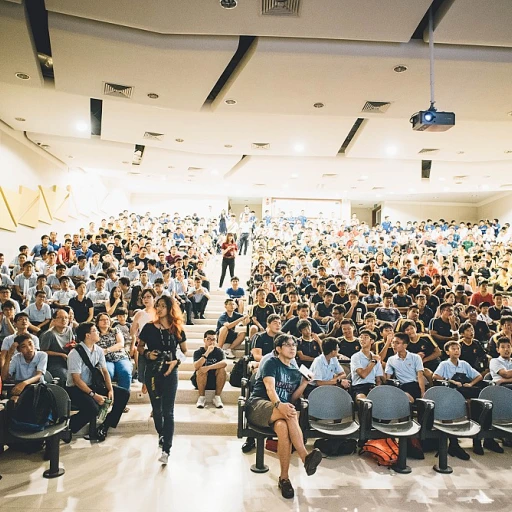Understanding the Core Elements of Nursing Informatics
Exploring the Foundations of Nursing Informatics
Nursing informatics is a dynamic field that sits at the intersection of healthcare, technology, and data management. It plays a crucial role in enhancing patient care and streamlining healthcare processes. Understanding the core elements of nursing informatics is essential for nurses, healthcare professionals, and organizations aiming to leverage informatics competencies effectively.
At its heart, nursing informatics involves the integration of people, processes, and technology. This triad forms the backbone of any successful informatics initiative. It requires a comprehensive understanding of how these elements interact to improve healthcare outcomes.
People: The Driving Force
People are the cornerstone of nursing informatics. Nurse leaders, healthcare professionals, and informatics specialists work together to implement and manage health informatics systems. Their expertise is vital in ensuring that technology solutions meet the needs of patients and healthcare providers. Effective change management strategies are essential to facilitate the adoption of new technologies and processes.
Processes: Streamlining for Efficiency
Processes in nursing informatics focus on optimizing workflows and improving efficiency in patient care. By analyzing and refining healthcare processes, organizations can enhance clinical decision support and patient outcomes. This involves a systematic approach to process technology and the implementation of frameworks that support seamless operations.
Technology: The Enabler
Technology is the enabler that drives innovation in nursing informatics. From electronic medical records (EMR) implementation to advanced decision support systems, technology provides the tools necessary for digital transformation in healthcare. The integration of socio-technical systems is crucial for ensuring that technological solutions align with the practical needs of healthcare providers and patients.
As we delve deeper into the role of people, technology, and processes in nursing informatics, it becomes evident that a holistic approach is necessary for successful implementation. By understanding these core elements, healthcare organizations can better navigate the challenges and opportunities presented by the evolving landscape of health informatics.
The Role of People in Nursing Informatics
Human Element in Nursing Informatics
In the realm of nursing informatics, the role of people is pivotal. As healthcare systems evolve, the integration of informatics into nursing practice is not just about technology but also about the human element. Nurses, as primary caregivers, are at the forefront of this integration, ensuring that patient care is enhanced through the effective use of technology.
Empowering Nurses through Education
Nurses must be equipped with the necessary informatics competencies to navigate the digital landscape effectively. This involves a comprehensive understanding of health informatics, data management, and clinical decision support systems. Continuous education and training are essential to empower nurses, enabling them to adapt to new technologies and processes seamlessly.
Socio-Technical Integration
Successful integration of nursing informatics requires a socio-technical approach. This means acknowledging the interplay between people, processes, and technology. Nurse leaders play a crucial role in this framework, guiding their teams through change management and ensuring that the implementation of new systems is aligned with the organization's goals.
Challenges and Change Management
Implementing informatics in healthcare settings is not without challenges. Resistance to change, lack of resources, and insufficient training can hinder progress. Effective change management strategies are vital to overcoming these obstacles. This involves clear communication, stakeholder engagement, and a robust support system to facilitate the transition.
For more insights on the role of CHROs in digital transformation, visit The Role of CHROs in Digital Transformation.
Leveraging Technology for Improved Patient Care
Embracing Digital Technologies for Enhanced Patient Outcomes
The integration of technology in nursing informatics plays a pivotal role in transforming patient care. By leveraging informatics and digital tools, healthcare professionals can access real-time data to make informed decisions, ultimately improving the quality of care provided to patients. This digital transformation allows for the seamless exchange of information, aiding nurses in delivering more precise and personalized care. Incorporating electronic medical records (EMR) enables healthcare providers to streamline processes and enhance workflow efficiency. The implementation of EMR systems not only aids in the accurate documentation of patient data but also facilitates better communication among healthcare teams. With improved data management and accessibility, clinicians can collaborate effectively, minimizing errors and ensuring patient safety. Health informatics also introduces advanced decision support systems, which provide critical insights during clinical decision-making processes. This enhances the capability of care providers to offer evidence-based interventions tailored to each patient’s specific needs, further boosting the effectiveness of treatments. Moreover, the socio-technical aspects of implementing these technologies can’t be ignored. Successfully integrating technology in nursing practice demands leadership in change management, ensuring that healthcare professionals are adequately supported and prepared for new digital tools. Nurse leaders play an instrumental role in guiding teams through this transition, addressing any concerns and facilitating a smooth adaptation. To traverse the intricacies of integrating people, technology, and processes, a well-defined framework is essential. This framework includes an assessment of current systems, thorough planning, and strategic execution of informatics projects. By doing so, organizations can harness the full potential of technology to enrich healthcare delivery. For those exploring comprehensive frameworks to incorporate technology effectively, exploring free open source software for call center quality assurance can offer valuable insights into the adaptability and application of digital tools.Streamlining Processes for Efficiency
Optimizing Processes for Greater Efficiency in Nursing Informatics
In the realm of nursing informatics, the integration of people, technology, and processes is pivotal to enhancing patient care and improving healthcare outcomes. Streamlining processes involves a careful examination of current workflows and the implementation of strategies that leverage informatics and technology to maximize efficiency.
One of the key aspects of optimizing processes in nursing informatics is the effective management of electronic medical records (EMR). EMR implementation requires a well-structured framework that considers the socio-technical aspects of healthcare systems. This includes understanding how nurses and other healthcare professionals interact with technology and ensuring that the systems support clinical decision-making and patient care.
Implementing Change Management Strategies
Change management is crucial when introducing new processes or technologies in healthcare settings. Nurse leaders play a significant role in guiding their teams through these transitions. By fostering an environment of continuous learning and adaptation, nurse leaders can help their teams develop the informatics competencies necessary for successful implementation.
Utilizing data and informatics, healthcare organizations can identify areas where processes can be improved. This involves analyzing data from various sources, such as health informatics systems and clinical decision support tools, to make informed decisions that enhance patient care.
Leveraging Technology for Process Optimization
Technology serves as a catalyst for process optimization in nursing informatics. Digital transformation initiatives, such as the adoption of decision support systems and health informatics tools, enable healthcare providers to streamline workflows and reduce the burden on nursing staff. By automating routine tasks and improving data management, healthcare organizations can focus more on patient-centered care.
Moreover, the integration of advanced technologies, such as artificial intelligence and machine learning, into nursing practice can further enhance the efficiency of healthcare processes. These technologies provide valuable insights and support clinical decision-making, ultimately leading to better patient outcomes.
In conclusion, streamlining processes in nursing informatics requires a comprehensive approach that considers the interplay between people, technology, and processes. By embracing change management strategies and leveraging technology, healthcare organizations can optimize their operations and deliver high-quality care to patients.
Challenges in Integrating People, Technology, and Processes
Overcoming Barriers in Nursing Informatics Integration
Integrating people, technology, and processes in nursing informatics is a complex undertaking that faces several challenges. These challenges often arise from the intricate interplay between human factors, technological advancements, and process optimization. Understanding these barriers is crucial for effective implementation and management of informatics systems in healthcare settings.
Human Factors and Change Management
One of the primary challenges in integrating nursing informatics is the resistance to change among healthcare professionals. Nurses and other staff may be hesitant to adopt new technologies due to a lack of informatics competencies or fear of disrupting established workflows. Effective change management strategies are essential to address these concerns, ensuring that all stakeholders are adequately trained and supported during the transition.
Technological Integration Issues
The rapid evolution of technology in healthcare presents another significant challenge. Ensuring that new systems are compatible with existing electronic medical records (EMR) and other healthcare technologies requires careful planning and technical expertise. The socio-technical theory emphasizes the need for a balanced approach, where both technical and social aspects are considered during system implementation.
Process Optimization and Workflow Alignment
Streamlining processes to enhance efficiency is a critical component of nursing informatics. However, aligning new technologies with current workflows can be daunting. It requires a thorough understanding of existing processes and a clear framework for integrating new systems without disrupting patient care. Nurse leaders play a pivotal role in facilitating this alignment, ensuring that technology supports rather than hinders clinical decision-making and patient care.
Data Management and Security Concerns
With the increasing reliance on digital systems, managing vast amounts of health data securely becomes a pressing issue. Ensuring data integrity and protecting patient information from breaches are vital for maintaining trust in healthcare systems. A robust framework for data management and security is essential to address these challenges effectively.
In conclusion, while the integration of people, technology, and processes in nursing informatics presents several challenges, a strategic approach focusing on change management, technological compatibility, workflow alignment, and data security can help overcome these barriers. By addressing these challenges head-on, healthcare organizations can leverage informatics to enhance patient care and improve overall health outcomes.
Future Trends in Nursing Informatics
Emerging Trends in Nursing Informatics
As the field of nursing informatics continues to evolve, several key trends are emerging that promise to reshape the landscape of healthcare. These trends not only focus on integrating technology and data but also emphasize the critical role of people and processes in delivering enhanced patient care.
Advancements in Digital Health Technologies
Digital transformation in healthcare is accelerating, with innovations such as electronic medical records (EMR) implementation, clinical decision support systems, and mobile health applications becoming more prevalent. These technologies are designed to streamline processes, improve patient outcomes, and facilitate better decision-making by healthcare professionals. With the continuous development of health informatics, the integration of artificial intelligence and machine learning is also on the rise, offering new opportunities for predictive analytics and personalized patient care.
Emphasis on Informatics Competencies
As technology becomes more embedded in healthcare systems, there is a growing need for nurses and healthcare professionals to develop informatics competencies. This includes understanding data management, health information systems, and the socio-technical aspects of healthcare delivery. Educational programs are increasingly incorporating these competencies into their curricula, preparing the next generation of nurse leaders to navigate the complexities of modern healthcare environments.
Focus on Change Management and People Processes
Successful implementation of new technologies in healthcare requires effective change management strategies. This involves engaging stakeholders, addressing resistance to change, and fostering a culture of continuous improvement. By focusing on people processes, healthcare organizations can ensure that technology adoption aligns with clinical workflows and enhances nursing practice.
Integration of Interdisciplinary Frameworks
The integration of interdisciplinary frameworks, such as the socio-technical theory and the PPT framework (People, Process, Technology), is gaining traction in nursing informatics. These frameworks provide a holistic approach to understanding the interactions between people, technology, and processes, ultimately leading to more effective health care delivery and improved patient care outcomes.
Growing Importance of Data-Driven Decision Making
Data knowledge and management are becoming central to healthcare decision-making processes. As healthcare organizations collect and analyze vast amounts of data, there is an increasing reliance on data-driven insights to inform clinical and administrative decisions. This trend underscores the importance of robust data governance and management practices to ensure the accuracy and reliability of health data.
In conclusion, the future of nursing informatics is shaped by ongoing advancements in technology, a focus on developing informatics competencies, and the integration of comprehensive frameworks that prioritize people and processes. These trends are setting the stage for a more efficient, patient-centered healthcare system that leverages data and technology to deliver better care.






